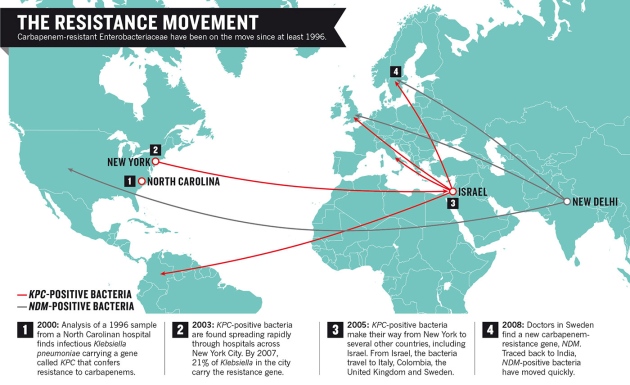K-PAM
K-PAM (Klebsiella species serotype predictor and surface antigens modeler) is an in silico diagnostic tool that can predict the serotype of Klebsiella spp. (K- and O-types) using the gene/protein sequences of proteins involved in biosynthesis and transportations of CPS and LPS. K-PAM also has the 3D structural repository of 75 K (K1 to K82 except K29, K42, K52, K65, K75-78) and 9 O (O1, O2, O2ac, O2ah, O3, O4, O5, O7, O8, O9 and O12) antigens that are modeled based on the sugar composition, linkage and substitutions information derived from experimental techniques such as Smith degradation, methylation analysis and NMR measurements. Using the modeled K-antigen repeats, their multimers can also be generated following the method described in the modeling of E coli K-antigens (Kunduru et al., 2016). For details visit documentation page.
Klebsiella
Klebsiella is a Gram-negative bacteria belonging to Enterobacteriaceae family. It causes infections like pneumonia,bloodstream infections, meningitis, and wound or surgical site infections. Klebsiella are Gram-negative, nonmotile, nonflagellated, facultative anaerobic rods belonging to Enterobacteriaceae family. Klebsiella frequently cause community acquired and nosocomial infections. The bacteria cause a wide range of infections including community-acquired pneumonia, UTI, rhinoscleroma and ozena, chronic genital ulcerative disease, liver abscess. Klebsiella pneumoniae and K. oxytoca are clinically relevant species. K. pneumoniae causes infections in humans of all age, but predominantly affects infants, the immunocompromised and the elderly. This species is one of the leading causes of community acquired pneumonia. Many virulence factors have been attributed to the pathogenicity which include lipopolysaccharides (LPS), fimbrial and non-fimbrial adhesins, endotoxin, capsular polysaccharides (CPS) and cell wall receptors.The capsular polysaccharide (CPS) is an important virulence factor. A total of 79 K antigen and 9 O antigen types have been identified through serological reactivity tests, molecular genotyping and phage typing.
|
Schematic representation of proteins involved in the biosynthesis and export of O and K antigens respectively
|
Recent updates on antimicrobial resistance [Note: Click on the picture to go to the source page.] |
Capsule biosynthesis and export
CPS or K-antigens are one of the major virulence determinants in Gram-negative bacteria that help the bacteria to evade host immune response. It is a mucus layer (comprising oligosaccharides) produced on the surface of bacteria and protects the bacteria from environment. The structures of K antigens from Klebsiella show resemblance to E.coli group 1 capsule (Whitfield et al.,1998). Different glycosyl transferases are involved in addition of sugars to the polysacharide antigen. Capsular polysaccharide synthesis gene cluster(cps) in Klebsiella has been found to consist of six genes at 5` : galF, cpsACP, wzi, wza, wzb and wzc - involved in export of CPS and two genes at 3` : gnd and ugd - coding for glucose-6-phosphate dehydrogenase and UDP-glucose dehydrogenase respectively. The genetic organization is found to be conserved among serotypes at 5` and 3`and a block of four genes (orfX-wza-wzb-wzc) is found to be conserved between E. coli and Klebsiella.
Lipopolysaccharide biosynthesis and export
Like other members of Enterobacteriaceae, Klebsiella LPS posses lipid A, core polysaccharide and O chain (O antigen). LPS are endotoxins and important virulence factors in Gram-negative bacteria.The core polysaccharide and O chains are highly immunogenic and LPS substantially contributes to serum-resistant phenotype in many Klebsiella isolates. ABC transporter pathway has been reported to be the one involved in the synthesis of K. pneumoniae O1 antigen. Undecaprenylphosphate GlcNAc-1-phosphate transferase (initiating glycosyltransferase in members of Enterobacteriaceae) coded by the wecA gene adds the first sugar und-PP-GlcNAc. The basic unit of O antigens is D-galactan I and are capped to give difference in the serotype. Genes present at his-linked O-PS biosynthesis locus are needed for the synthesis of D-galactan I. wzm and wzt are the genes encoding for transmembrane and ATP binding components of the ABC transporter. wbbM, glf, wbbN, and wbbO are proposed to encode for proteins involved in the synthesis of D-galactan I.
Carbapenem resistance
Carbapenem-resistant Klebsiella species and carbapenem-resistant E. coli are the most common carbapenem-resistant Enterobacteriaceae (CRE) which are frequently reported. Despite unique characteristics of carbapenems, K. pneumoniae has produced K. pneumoniae carbapenemase (KPC) that breaks down carbapenems. Three different classes of carbapenemase have been reported in K. pneumoniae - Ambler class A beta-lactamase (KPC), class B (metallo-enzymes), and class D (OXA-48 type). KPC (class A) producing bacteria were initially found in North Carolina (2000) and by 2003, it has spread to New York. Later the strain was found in Israel, Italy, Colombia, United Kingdom and Sweden. New Delhi metallo-beta-lactamase-1 (NDM-1) has spread worldwide and oxacillinase-48 type has been identified to be widely spread in Mediterranean and southern European countries.
Movement of Carbapenem resistant strains across continents (Mckenna.,2013)







